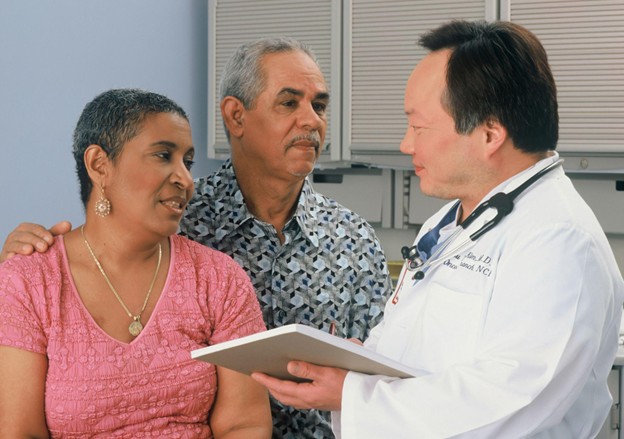
Personalized medicine shifts the focus of treatment from the broad population to the unique makeup of each patient. It builds care plans around the individual’s DNA, lifestyle, and environment. Where doctors once prescribed the same treatment to every patient with a condition, now science can tailor each decision.
This new approach matters because it allows targeted therapy, fewer side effects, and better outcomes. Noted physician, Dr. Philippe Smith, explores how today’s advances in genetics, artificial intelligence, and daily data tracking change what doctors can do to make medicine personal, promising a new standard for health while raising urgent questions for ethics, privacy, and access.
Advancing Technologies Powering Personalized Medicine
The future of health care depends on data and new ways to read it. Scientists now decode the human genome at record speed and low cost. Digital records, smart algorithms, and connected devices stream real-time health data. Each part by itself improves care, but their full promise comes when used together. These tools treat illness and help spot health risks before symptoms show. They also help prevent disease through constant learning from huge pools of patient data.
Genomics marks a turning point in how doctors see risk and treatment. By mapping a person’s genes, doctors can spot hidden threats or predict how drugs will work.
“Gene markers can show a high risk of certain cancers,” says Dr. Philippe Smith. “Knowing this means people can screen earlier or even avoid disease. In cancer care, this knowledge directs doctors to the best drug for a tumor’s genetic type.”
Genomics also warns doctors if a common drug would harm this person. Some people break down drugs slowly due to gene variants. Others might not get any benefit from costly medications. Gene tests let doctors pick safer, more effective treatments from the start. Over time, this helps avoid reactions, saves money, and makes care feel more human.
Big data refers to the massive sets of health information now collected from hospitals, labs, and devices. Alone, this mountain of data would be too complex for doctors to use by eye. Artificial intelligence steps in here, spotting trends in seconds that would take years for people to find.
Machine learning programs compare thousands of cases at once. If a doctor faces a puzzling case, these tools suggest proven treatments based on similar patients. They can forecast if a patient will respond well or suffer side effects based on older data.
AI models scan images, read test results, and even catch patterns that experts miss. In some hospitals, AI has cut down misdiagnoses, saved time, and pushed new standards for accurate care.
Wearable health devices, such as smartwatches or fitness bands, add a new layer to care. These tools gather constant updates on heart rate, steps, sleep, and more. Many now check glucose levels, heart rhythm, and blood pressure without a trip to the clinic.
“This flood of real-time data helps patients and us as doctors spot changes early,” notes Dr. Smith.
If a person’s heart rhythm turns abnormal, the watch sends an alert both to them and their provider. Those at risk of stroke or diabetes can adjust habits with instant feedback. The result is a cycle of learning and change: people see how choices affect their numbers and adjust in real life, not just at annual visits.
These devices also support long-term research. Aggregated data from thousands of users reveals trends and early warning signs for entire populations. When paired with genetic data and medical history, this offers unmatched insight for more precise and timely interventions.
Promise and Challenges of Widespread Personalization in Healthcare
Personalized medicine carries the hope of better results for patients, less waste, and smarter use of healthcare dollars. It also exposes gaps in current systems. Not everyone can access tailored treatment due to cost, data limits, privacy fears, or lack of clear policy. The promise is huge, but the world needs careful steps to reach it.
With data that fits each patient, doctors aim for higher cure rates and fewer complications. When therapy matches a patient’s genetic profile, success rates climb. Side effects tend to decrease, since each dose is tuned to the person’s makeup.
Patients also gain a stronger voice. Wearables, apps, and personal health dashboards turn users into active partners. Instead of following instructions blindly, they see the effects of medicine, diet, and sleep on health.
People with chronic conditions become experts on their bodies, supported with targeted advice instead of generic plans. This engagement drives adherence to treatment and improves quality of life.
With greater power comes greater risk. Not all communities receive the benefits of personalized medicine. Genomic testing and AI tools carry high costs. Some insurance plans may not cover new diagnostics or treatments, widening old health gaps.
Privacy remains a key worry. Health data, especially genetic codes, is deeply personal. Breaches, misuse, or hacking could cause real harm, from discrimination to financial loss. People may worry how insurers, employers, or even family members could use their data. Healthcare leaders must set clear limits on who can use health data, and for what reasons.
Equal access is another hurdle. Rural areas, small clinics, and low-income families might be left behind as elite hospitals move ahead. Policymakers, insurance providers, and tech firms must work together to make sure new tools help everyone.
Governments and health agencies already see the impact of genetic tests, big data, and wearable devices. Regulators now face hard choices: how to approve new treatments faster, guard patient rights, and police the use of sensitive data. They need clear rules for how companies handle private health information, how doctors use AI systems, and how to standardize tests for fairness and accuracy.
“Training and funding will be key,” says Dr. Smith.
Doctors need new skills to read genetic reports, use AI, and discuss risks with patients. Clinic networks need stronger digital systems to store, share, and guard patient data. Lawmakers should act quickly to update privacy laws and set standards for data sharing.
International groups, such as the World Health Organization, can help by spreading best practices and building global standards. Collaboration between hospitals, labs, tech firms, and patients must grow so innovation benefits all corners of society.
Personalized medicine is reshaping healthcare by treating each patient as unique rather than an average case. Advances like gene tests, AI, and wearables aim to make care safer, more precise, and tailored. Yet, progress faces hurdles such as rising costs, privacy concerns, and outdated laws.
The future depends on the decisions of doctors, patients, and policymakers. Those advocating for patient rights, data ethics, and equitable access will drive the most benefit. As these tools become widespread, society must adapt, stay informed, and uphold the core goal: care that reflects each person’s individual story and health journey.






